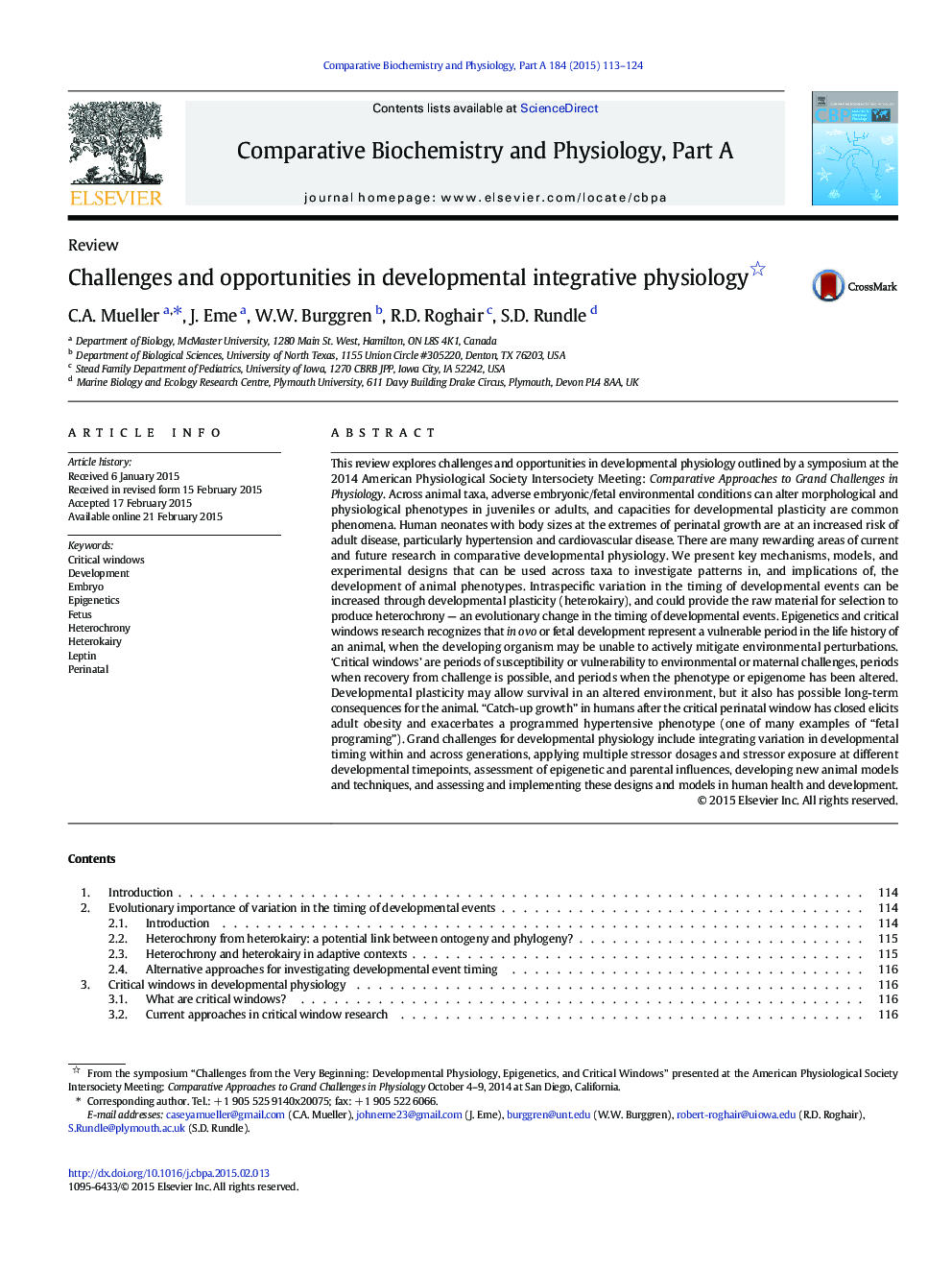| کد مقاله | کد نشریه | سال انتشار | مقاله انگلیسی | نسخه تمام متن |
|---|---|---|---|---|
| 1971965 | 1539003 | 2015 | 12 صفحه PDF | دانلود رایگان |
This review explores challenges and opportunities in developmental physiology outlined by a symposium at the 2014 American Physiological Society Intersociety Meeting: Comparative Approaches to Grand Challenges in Physiology. Across animal taxa, adverse embryonic/fetal environmental conditions can alter morphological and physiological phenotypes in juveniles or adults, and capacities for developmental plasticity are common phenomena. Human neonates with body sizes at the extremes of perinatal growth are at an increased risk of adult disease, particularly hypertension and cardiovascular disease. There are many rewarding areas of current and future research in comparative developmental physiology. We present key mechanisms, models, and experimental designs that can be used across taxa to investigate patterns in, and implications of, the development of animal phenotypes. Intraspecific variation in the timing of developmental events can be increased through developmental plasticity (heterokairy), and could provide the raw material for selection to produce heterochrony — an evolutionary change in the timing of developmental events. Epigenetics and critical windows research recognizes that in ovo or fetal development represent a vulnerable period in the life history of an animal, when the developing organism may be unable to actively mitigate environmental perturbations. ‘Critical windows’ are periods of susceptibility or vulnerability to environmental or maternal challenges, periods when recovery from challenge is possible, and periods when the phenotype or epigenome has been altered. Developmental plasticity may allow survival in an altered environment, but it also has possible long-term consequences for the animal. “Catch-up growth” in humans after the critical perinatal window has closed elicits adult obesity and exacerbates a programmed hypertensive phenotype (one of many examples of “fetal programing”). Grand challenges for developmental physiology include integrating variation in developmental timing within and across generations, applying multiple stressor dosages and stressor exposure at different developmental timepoints, assessment of epigenetic and parental influences, developing new animal models and techniques, and assessing and implementing these designs and models in human health and development.
Journal: Comparative Biochemistry and Physiology Part A: Molecular & Integrative Physiology - Volume 184, June 2015, Pages 113–124
